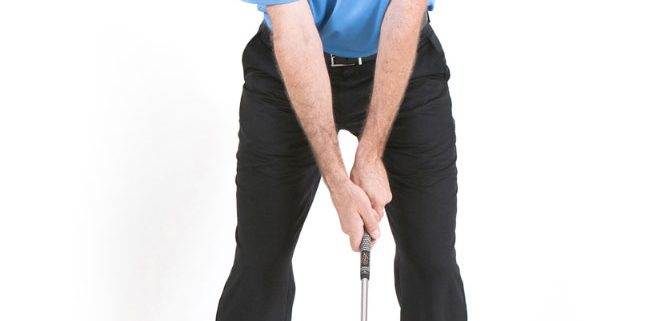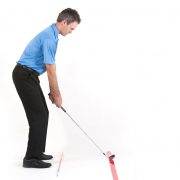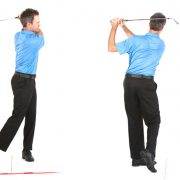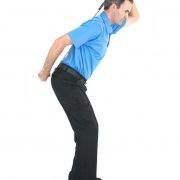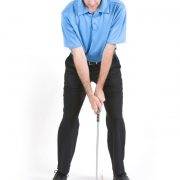Golf Swing Aim and Alignment
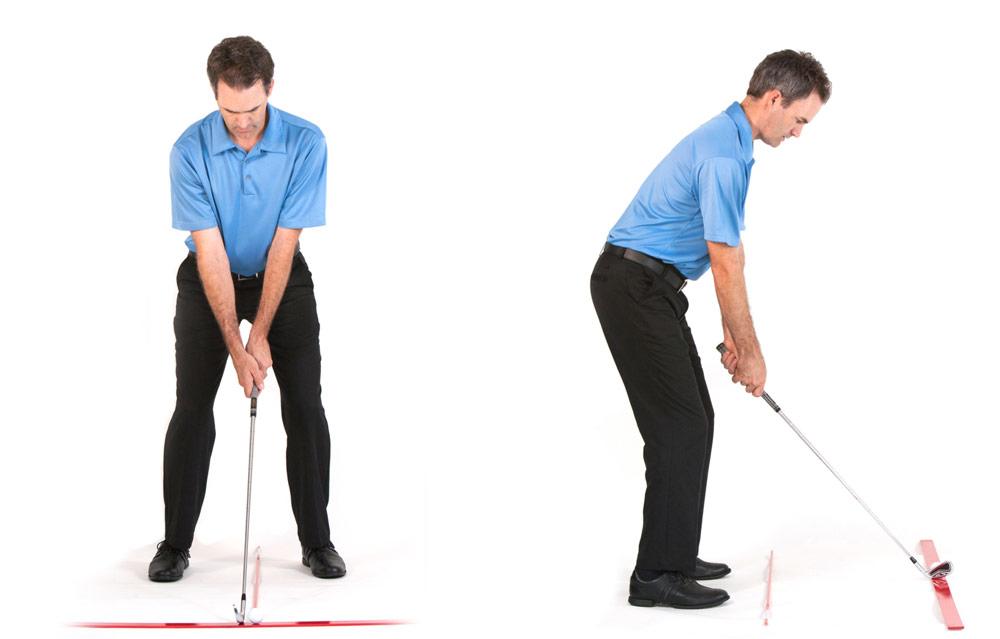 Alignment is the concept of addressing the golf ball with your body and club face directed precisely at the intended target. If consistent results are expected, then a consistent alignment is necessary. Otherwise, if a player’s alignment changes for every golf shot, every golf swing must change in order to produce consistent results.
Alignment is the concept of addressing the golf ball with your body and club face directed precisely at the intended target. If consistent results are expected, then a consistent alignment is necessary. Otherwise, if a player’s alignment changes for every golf shot, every golf swing must change in order to produce consistent results.
Determine a Target and Target Line
Once all other variables have been considered (wind, slope, hazards, lie, etc.), you must decide on a distinct point where you intend the ball to finish. Let’s assume a straight ball flight is desired; working the ball will come later. The target cannot be a generalized area, but should be as precise as possible. Consider a straight line from the ball to the target to be the target line. This will be the focus around which all alignment takes place.
Soling the Clubhead
Begin with the clubhead. Clubface angle is one of only 2 major variables that determine the direction the golf ball will travel, so be precise. Be sure that the sole, or bottom of the clubhead rests completely flat on the ground. Neither the toe nor heel of the club should be raised higher than the other. In other words, the grooves on the clubface should be parallel to the ground. This will affect direction as well as consistency of contact.
Clubface Alignment
Be sure that the leading edge, bottom edge, and/or grooves of the clubface are set perpendicular to the target line. Depending on the club being used, a few degrees off with clubface alignment could mean many yards off line for the shot. When the club is set in the proper position, trust it, and leave it alone for the remainder of the setup.
Body Alignment
Assuming you are hitting a straight shot, your body will be facing exactly perpendicular to the target line. An easier way to regard this problem is to look at line drawn across a player’s feet, knees, hips, shoulders, and even eyes. Ideally, all of these connecting lines should align parallel to the target line. This is one of the most important, but underrated aspects of the entire golf swing. Tour professionals check this alignment on a daily basis.Before you begin, notice that your body is aligning parallel to the target line and not at the target itself. Many players make the mistake of directing both the clubface and their bodies at the target. This would mean that the two lines are not parallel, but converging. For right-handed players, the body is aligned distinctly to the left of the target.
Using Golf Clubs for Alignment (Practice Only)
To be sure that your alignment is correct, you will need a few extra golf clubs on the practice range. First, place one club on the ground, in front of the golf ball, directed straight at your target. It may help to stand behind the ball to be sure that you are accurate. This will highlight your target line.Toe Line / Body LineNext, place another club on the ground just in front of where your toes will be at address. This club must be set perfectly parallel to the target line club (shafts should be equidistant from each other at both ends). Take a moment to step back behind the ball and notice where the second club is pointing relative to your target. As mentioned above, this shaft (for right-handed players) should align well to the left of the target. These are parallel, not converging lines.
Checking Body Position
When you are set up to the ball, hold still. Have someone hold a shaft across your heels, knees, hips, shoulders, and eyes while ensuring that all lines are parallel to both clubs on the ground. If one of these lines is significantly off-line, you will need to re-orient yourself and set up over again. When all of your lines are parallel, you will be aligned target-ward. This will give you the greatest chance of making a golf swing that is on plane, accurate, and consistent.
You might also note that because your right hand is positioned slightly further down the club than your left hand, your right shoulder may in fact be situated slightly lower than your left shoulder. This tilt in our shoulders is certainly okay and is actually expected. Alignment problems arise however, if we allow our shoulders to open, so be conscious of this tendency. Alignment calls for regular attention and maintenance as it directly affects the path that the club head will travel on, as well as how consistent your shots will reach your target.
In summary, the target line is defined as a straight line from the ball to our intended target. Start by setting the club face down on the ground first, trust it, and then let it serve as a guide for the rest of your set up. All of your body lines including your feet, knees, hips, and shoulders should be parallel to your target line. Because your right hand sits on the club lower than your left, your right shoulder may be situated slightly lower than your left. This is perfectly fine, just don’t allow your shoulders to open or close as this will affect the path that your club is going to travel.

